A new way of thinking about health and medicine
By Walter Sorochan HSD, MPH, MSc, BPE, Emeritus Professor San Diego State University
Posted January 8, 2019, Updated October 23, 2021. Disclaimer Work in progress.
This article is a new way of thinking about health, life, medicine, health care system and civilization. The proposed theory is survival wellness. It relates to the epidemic of chronic diseases, food, health care, prevention and survival.
The information on the opening page of this website symbolizes the need to understand the need to change our entire lifestyle if we, as a civilization, are to survive. Humans deal with everyday tasks as economists, homemakers, engineers, doctors, teachers, students, actors, and others trying to sustain a life worth living. Most never reach optimal wellbeing or their full potential and are fortunate to somehow survive a less full life. Many persons neglect taking care of their bodies, largely because they are not informed about how their bodies work.
Man has had to survive for thousands of years. Past survival history sets a presidence for continuing the need to survive now and in the future. It is as though survival is programmed into our genes.
Here is a brief history of man to back up this observation. The most important and overlooked survival need is sunlight. It was the sun millions of years ago that initially provided the energy and spark to evolve plant-bacteria, known as blue-green algae or spirulina. The illustrations below show the slow evolutionary processes that humans survived:
 |
 |
 |
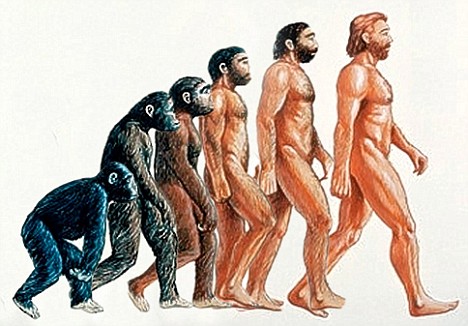 |
 |
 |
 |
| sun photosynthesis | cyanobacteria | plants-lung fish | evolution | ancient man | Mesepotamia | Roman senate |
This form of hybrid algae organism used sunshine to make its own food and be able to survive. Eventually, spirulina gave rise to fish with lungs and plants using sunlight as energy to stimulate the process of photosynthesis to form plant food. Plants, in turn, provided the food for animals and humans. Without essential sunshine, there would be no plants, no food and species survival.
Health and wellbeing [wellness] are basically viewed as having the same meaning. Health was a term used more generally before 1980 to express freedom from disease or infection. But with the advancement of nano-technology and medical science, we now have a much more advanced understanding of how the body works and how complex wellbeing can be. Although we now have the basis for a new understanding of wellness, humans have become obsessed with greed, power and money and ignore the welfare of people. Survival of civilization is in jeopardy.
The meaning for health evolved as mankind found ways to survive over millions of years. It started when the solar system and earth were formed. Such survival [click mouse over image] is briefly summarized in the article images below:

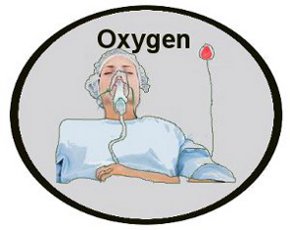
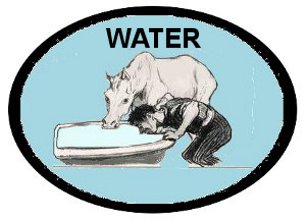
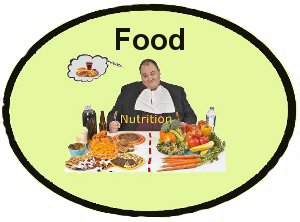
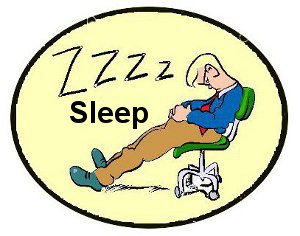


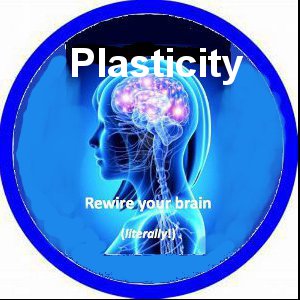
Click on image for more information.
Ancient civilizations were aware that their survival was somehow linked to the sun's energy, but lacking the science to understand the sun and earth relationship. They were aware that the sun was essential to their survival and gave the sun Godlike, mystic powers. The Roman empire had six kings, wars and many disagreements before the idea of king rule was abandoned for a senate government.
Forward to today: The sun is the primary survival need although most persons do not perceive the sun as an essential need. Scientists recognize secondary essential survival needs as oxygen from clean air, water, food and sleep.
A quick comment about how these four affect people in the world today. These four needs are taken for granted in most parts of the world. We seldom think about needing oxygen to survive unless one lives in air polluted Asian countries like China and India. Water is a major survival need in desert countries and where the water supply is polluted. Although food as a carbohydrate source of energy may help prevent starvation, it is the lack of quality nutrients that is contributing to many chronic diseases today. Although people living in many advanced nations have food, many are nutrient malnourished. This is a new form of survival concern that is related to chronic diseases caused by eating bad food. People survive with food but incubate chronic diseases. Sleep is a survival need that is regulated by the biological clock. The tired brain re-charges, the stomach empties, the body repairs and heals with sleep.
Secondary level survival needs evolved as mankind banded together socially for protection; eventually realizing the need to control its members with values and morality in order to continue surviving [as ancient Romans did]. During these periods of survival episodes, the human brain evolved as an advanced form of survival such as thinking and solving problems. Today, the brain needs excitement from new experiences and adventures. Advancements in high nano-technology since 2000 have allowed scientists to learn about this mystic power as plasticity. Plasticity is an advanced form of fine tuned and higher level survival. [11]
Although evolution has advanced health through the ages, it has been improvement in sanitation, water purification and better diet, that since 1900, have provided humans with better health and opportunities for better living and longer life. Such advancements provided us with life needs for survival. Although not everyone is in good health today, all persons are able to survive in some fashion.
The human body has been programmed to sustain life and this is what we refer to as survival. The degree or limit of survival is based on health or how well one is. Classic example of those surviving are obese persons. They survive with a chronic disease, function in society, but usually do not attain optimal wellbeing.
Living with a disease is not being on the same health level as someone without a disease. There is a biblical saying - "How great thou art!" - but to be great you need optimal wellness. Otherwise, if you are sick or harboring a disease, you are functioning at a survival wellness level. At this sickness level, you do less and live less. Just living a subsistence lifestyle does not 'cut it'. One needs to maximize the inner potential for optimal wellbeing and excellence!
You should be aware that you can survive a "lingering" or "survival" life for many months and years with inadequate amounts of nutrients, sunshine, and physical activity. [3] Your body has a great ability to compensate when nutrients are in short supply. It does so by your natural body maintenance - healing process. You probably will have signs and symptoms of poor health but not pay much attention to these signs. Such signs and symptoms can persist for months and years, slowly incubating a dysfunction or illness that, if not healed, eventuates into a chronic disease. You function at a lower survival level of wellness while all these bodily happenings are taking place. As a somewhat deprived person, you live less, do less and not realize it!
Many persons in good health will probably say that they do not need to practice prevention. They may be feeling good about some of their bad habits, like eating sugary pastries, hamburgers, and French fries, but unaware that their bad habits may also be incubating a disorder or disease. Such a sweet good feeling is deceptive.
Even when you are sick or suffering from a disease, your silent body maintenance and healing system is compensating to keep you alive as well as it can. The mind-brain appears to have a built-in protective morality. It appears to have moral sensitivity like a built-in moral guidance system. It senses to do the right thing for the body it is in, protecting it and extending biological life as well as its own brain life. The brain wants to survive; it has no interest in money, power or politics.
The guidance system is biologically programmed to give top priority to keep the physical body alive. For example, the heart can continue to live [survive] outside the body as long as it receives oxygen and nutrients.
The body has the ability to heal itself if given the adequate nutrients. [2] When one or two of your body systems sputter or a nutrient is in short supply, your body equilibrium [homeostasis] is disrupted or broken, your immune level drops and you can quickly succumb to illnesses and diseases.
Most persons do not pay attention to the signals, or symptoms, that the sick body is sending. Your body sends signals of not feeling good and feeling sick! Prevention requires being able to recognize these as crisis signals. Recognizing the causative root of the problem, becoming aware of the need for change, and how to do it, can be a wake up call. Good body information provides motivation for behavior and lifestyle change.
The few examples above of how the body works illustrate how complex and precise our bodies are.
So what is optimal wellness?
The preceding information about how the human body works is a brief example of how the body reacts and changes take place. These changes are referred to as states or levels of wellness. Wellness and health are used interchangeably to describe and define the condition of the human body. Such definitions have not really changed that much from the World Health Organization [WHO] definition of health in 1948. [4] Most definitions of health and wellness focus on the traditional definition that is difficult to measure, and simply ignores the real changes taking place in the body each day. Indeed, it can be theorized that the current health care and medical system today are based on the outdated WHO theory of health. New research information since 2000 has provided many important medical and biological advancements that bring a change to our thinking about what health really is, how we can achieve optimal wellbeing and how we can foster a positive lifestyle.
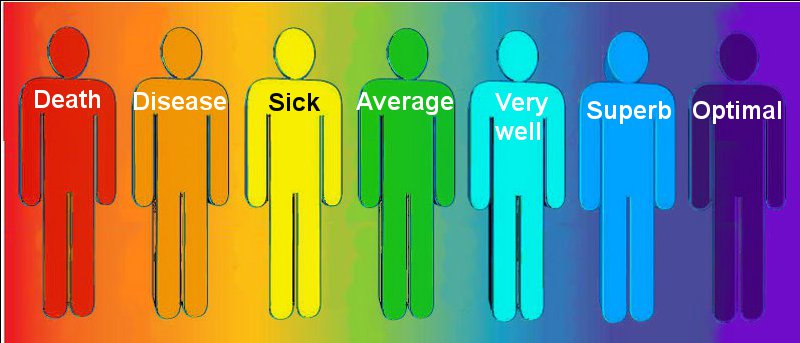 Delbert Dunn's Levels of Wellness [illustrated on left] is preferred to WHO definition of health because levels of wellness places health status on a continuum from optimal wellness to disease crisis. [3]
The continuum is portrayed in the illustration on the left side by the changing background color. A person in superb health functions differently from someone who is in a normal fitness or sick or diseased state. The continuum is based on different levels of functionality that are difficult to identify and for the average person to relate to.
Delbert Dunn's Levels of Wellness [illustrated on left] is preferred to WHO definition of health because levels of wellness places health status on a continuum from optimal wellness to disease crisis. [3]
The continuum is portrayed in the illustration on the left side by the changing background color. A person in superb health functions differently from someone who is in a normal fitness or sick or diseased state. The continuum is based on different levels of functionality that are difficult to identify and for the average person to relate to.
High level wellness and health promotion have had many spinoff theories from WHO and Dunn's level of wellness; like Bill Hettler's Six Dimensions of Wellness and John Travis's 12 dimensions of wellness. [10] The problem with these wellness theories as dimensions [social, occupational, spiritual, physical, intellectual and emotional] has been that these were ideas or concepts were theoretical, abstract in nature and had confounding and comingling factors that lacked substance, were difficult to isolate and were difficult to measure. Although wellness as an idea motivated many to aspire for better health, these versions of health have not been very effective in keeping the masses of people well, as evidenced by the chronic disease crisis getting worse since 1990. The current health care debate, since 1990, has also made understanding health much more difficult with the way doctors heal illness, injuries and diseases. Doctors treat symptoms with drugs but seldom relieve or fix the real causes of the symptoms. The thinking about health for most people is further complicated by the inefficiency of our health care system. Such medical approaches further muddy one's perception of health.
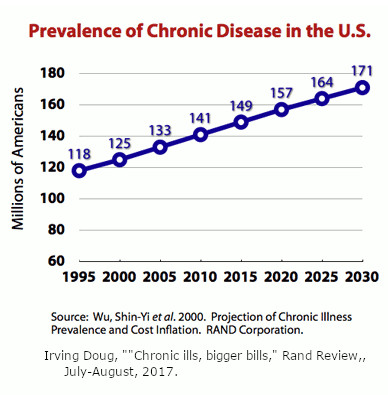 Levels
of wellness are linked to current health problems.
Our health problems, like overweight and obesity, diabetes, arthritis, and cancer, have not improved
with Western medicine. [refer to the graphic on the right] Likewise, there are many related
health practices that have not changed, such as inadequate recommended daily allowances, nutrient-mineral ratio balancing, lack of research about nutritional
co-factors, lack of medical recognition that food is the best medicine and medicine still being practiced the old fashioned way. [7] As a result, the
health status of the general population [observe graph on right side] has gotten worse since 1995, not better! [8]
We have a world chronic disease crisis.
Levels
of wellness are linked to current health problems.
Our health problems, like overweight and obesity, diabetes, arthritis, and cancer, have not improved
with Western medicine. [refer to the graphic on the right] Likewise, there are many related
health practices that have not changed, such as inadequate recommended daily allowances, nutrient-mineral ratio balancing, lack of research about nutritional
co-factors, lack of medical recognition that food is the best medicine and medicine still being practiced the old fashioned way. [7] As a result, the
health status of the general population [observe graph on right side] has gotten worse since 1995, not better! [8]
We have a world chronic disease crisis.
It is not just that the health care system in United States is failing; it is not working in most other countries. The medical model of symptom, diagnosis and treatment [through surgery or medication] has been, as Renton [9] points out, effective in dealing with "crisis emergency battlefield" injuries but not very effective in dealing with chronic diseases that plague our society. We have a medical symptoms treatment model and not a wellness-disease prevention model.
The new medical and biological advancements include methylation, epigenetics, recognizing the impact colon bacteria have on immunity, diseases and health, [5] [6] and liposomal encapsulation delivering medication and nutrients to target sites and speeding up healing. These few examples illustrate that information about the human body has progressed faster than it is being adopted or understood by the general population and medical experts.
The accepted WHO model of health, as practiced by western medical doctors, needs to change in order for the medical health care system to deal with the chronic disease crisis. Giving credibility to simplifying the concept of health is Dr. Frank Lipman [7] who points out that:
"The problem is that although most of us are not permanently in a health “crisis”, this crisis [medical] care model is being used to treat every health problem or symptom - as if it is the only health care model we have. Most of us are not sick enough to be in hospital, and by far the majority of people who visit their doctor, do so for ongoing chronic problems like diabetes, heart disease and obesity - or less-defined disorders like joint pains, back pains, fatigue and headaches."
One way to improve the approach to better health care is to simplify the meaning of health for the general population. This author has simplified the levels of wellness into three major levels: optimal wellness, survival wellness and crisis wellness. This approach replaces the medical perception of health as physiological benchmark definitions based on lab tests. Instead, wellbeing is simplified so that common folk can relate to and understand health as it works in their everyday life.
Health simplified: Dunn's continuum wellness levels are simplified into three levels of wellness. These levels depend on degree of freedom from disease, the severity of infection, disability and stages of the disease:
- Optimal wellness or perfect health is being free of most or all illness, disability and disease, which may be a rarity today. Chances are many persons harbor a single disorder or illness for a short period of time such as the flu', healing it and some time later becoming ill with another illness. They may vacillate for short periods from wellbeing to feeling sick but not suffering from a chronic disease.
- Survival wellness is when the body slides to incubating a disorder or disease and would be classified as in a survival mode of wellness. Most persons vacillate at this level, probably harboring at least one body health problem, often incubate a second disorder or disease and not be aware of it. Of course, this would also depend on one's physical fitness, body weight, diet and so on. Still functioning but with less gusto, vigor, doing less and living less. For example, when more than 50 percent of the population in United States is chronically obese and overweight, then such persons would be classified in a survival wellness mode.
- Crisis wellness is the lowest level of wellbeing. An example would be a person bed-ridden or disabled with a disease, hanging on to life. Barely surviving but not really functioning. And easy to identify!
This is a realistic common sense way of understanding health and wellbeing that is based on everyday living. Live, exist or almost dying!
The basis for simplifying the traditional models of health into three levels of wellness classification needs further explanation:
Survival-wellness: [3] What happens in survival wellmess? An interesting, as yet unexplained phenomenon of the human machine, is that the human body is able to adapt in a mysterious way like homeostasis, with no present signs or symptoms of mineral or vitamin imbalance resulting in a disorder. The adaptation utilizes amino acids, vitamins and minerals to fill in the missing information-healing gaps. And probably borrowing from Peter to pay Paul, as robbing bones for calcium or/and magnesium! Such adaptation will, in time, result in failed body systems. A person may go through his/her entire life nutritionally deficient or unbalanced and not know it while socializing, enjoying physical, mental and emotional activities. During this seemingly well time, depending on the severity of lack of nutritional balance, one may never become severely ill, while other factors are present that contribute to incubating diseases; such as emotional stresses, environmental toxins, nutrient deficiencies, processed foods, and so on and the body balancing these out with overall low level survival wellness. The classic example of the body's failing health but abie to survive for several months with a major deficiency, is that of sailors on ancient sailing ships subsisting on a diet deficient in fresh fruits and vegetables [vitamin C], that gradually caused scurvy symptoms in sailors before vitamin C was discovered. Another is those working in homes and offices but lacking sunshine and vitamin D. Today, many suffer from deficient nutrition similar to that of sailors long ago and not realize it, as the human body is a marvelous machine that compensates for man's indiscretions; and hangs on to survive.
This new perception of uncertain and often hidden survival-health is very different from all the establishment theories [4] stating that health is a balance of physical, mental, emotional, spiritual and social wellbeing and the absence of illness or disease. [4] There is no balance and most persons harbor and incubate disorders and diseases! These general theories overlooked the precision and delicate balance of nutrient fine tuning or nutrient balancing [3], that, in turn, could result in optimal wellbeing or, if deficient, incubate disease states. It is safe to say that if there are no visible signs of disease, in spite of the body sending signals as symptoms and the inflicted not recognizing the symptoms, that the body is not working properly, that most persons and medical doctors would assume such a person to be healthy. However, in real life, the body of a person appearing to be in good health and functioning, may not necessarily be well; the degree of wellbeing is compensated, hidden and medically undiagnosed.
But .... this is not the end of the health-survival story; for plasticity is the new enhancer to survival wellness. It extends the opportunities for optimal and perfect wellbeing. When humans give the brain the challenges that excite it, then human evolution progresses to a still higher level of functional living. It is more than living longer, with better wellbeing. The brain can explore new dimensions like mental telepathy, spiritualism and all those phenomena that we do not as yet understand. [11]
Prevention is stopping, avoiding getting sick or incubating a disease. Prevention works best when people and government do the following:
- Understand how the body works
- Eat good food
- Understand new theory of survival wellness
- Updating medicine to focus on the cause of body problems
- Federal and state governments give top priority to prevention
- Do regular exercise
The human body has built-in immunity centered in the colon to prevent getting sick. Unfortunately, immunity is often compromised by a poor diet. Eating bad foods, like processed foods, junk foods, sugar and red meat, provide food for the bad bacteria that can lower one's immunity, increasing susceptibility to infections, and incubate disorders and diseases. But by eating a diet of fresh raw vegetables, fruits and nuts, we the feed the good bacteria that enhances wellbeing and restores the balance to good [80%] and bad [20%] bacteria. Scientists now realize that antibiotics and many over the counter medications kill both good and bad bacteria in the colon and disrupt the balance of colon bacteria that is needed for prevention to work.
Application of survival wellness theory:
The new integrated theory of survival wellness would provide a guiding light to further change the outdated practice of medicine, the entire health care system and politics-government. People need a working theory of health that helps them to survive illness episodes, that they can relate to and that helps them to understand how their bodies work. Understanding how a body works is essential to being able to change and prevent disorders and diseases. Survival is more than not dying, it is based primarily on eating the proper kind of food and realizing that food is man's best medicine.
Although medicine attempts to explain how the body works and such attempts may help doctors understand how to perform surgery or how the heart works, people in general go about their business of doing things very much without being aware of how their body works and whether they are well, not feeling well or sick. And if they have a chronic disease, they fail to recognize body symptoms, and are usually not aware of these until it is too late.
The key to preventing chronic diseases is for the general public to understand how the body works. Having such information is an incentive to practicing prevention and wanting to be well.
There is growing support from medical doctors to revamp the dysfunctional health care system. [12] Physicians for a National Health Program (PNHP), a nonprofit research and education organization whose 23,000 members support single-payer national health insurance, endorses the Medicare for All Act of 2019. [13] Fifty-six percent of physicians in 1989 supported some form of national health program. [14]
There is also ample evidence that the high cost of chronic diseases can be lowered by prevention. [15] [16] [17] 80% of cardiovascular diseases and 60% of all cancers could be prevented, but not with the existing health care system we have today. [18] Economists have also predicted that we could pay for converting to a new health care system by regulating egregious salaries for top management, regulating drug prices and enacting an Inclusive Prosperity bill tax on stock trades. [19] [20]
We need a theoretical model of health that has substance, evolves from the body itself, can be measured with body signals or symptoms with accuracy and the help of lab tests, a survival wellness model that everyday people can understand and use as a guide to better wellbeing.
References:
1 The Anstendig Institute, "The body as machine," 1982. Anstendig Institute: Body as a machine 1982
2 Wilson Lawrence, "The balance concept in healing," January 2016. Wilson: Balanced healing 2016
3 Sorochan Walter, "Nutrient balancing -new theory of well-being," Freegrab.net, November 01, 2016. Sorochan: Nutrient-health theory
4 WHO, "WHO definition of health," April 7, 1948. WHO: Health definition 1948
5 Bork Peer, "Bacterial balance that keeps us healthy," Biology & Nature, March 4, 2010. Bork: Bacteria & human health 2010
6 Sorochan Walter, " The Immune - Digestive System Connection," Freegrab.net, January 29, 2013. Sorochan: Immune-digestive system 2013
7 Lipman Frank, "Changing Our Disease Care System To A Health Care System," The Huffington Post, November 17, 2011. Lipman: changing health care system 2011
8 MPKB, "Incidence and prevalence of chronic disease," The Marshall Protocol Knowledge Base. MPKB: Prevalence of chronic disease
9 Renton Lola, "The pitfalls of modern medicine: what you need to know," Igennus Healthy Care Nutrition, January 6, 2015. Renton: Pifalls of modern medicine 2015
10 Miller James William, "Wellness: The history and development of a concept." Spektrum Freizeit, 27 September 5, 2005. Miller: History of wellness 2006
11 Sorochan Walter, "Plasticity," December 30, 2018. Sorochan: Placticity 2018
12 Buntin Melinda Beeuwkes and David Cutler, "The Two Trillion Dollar Solution Saving money by modernizing the health care system," Center for American progress, June 2009. Buntin: modernizing hea care 2009
13 Physicians for a National Health Program, Physicians Group Endorses the Medicare for All Act of 2019, February 27, 2019. Physicians for National Health Program 2019
14 NEJM, "A National Health Program for the United States: A Physicians' Proposal," Reprinted from the New England Journal of Medicine, January 12, 1989. 320:102-108. NEJM: Physicians support national health care 1989
15 Getlen Larry, "5 scary facts about America’s broken health care system," New York Post, May 6, 2017. [Time to Address Emerging Infections and Environmental Toxins: Let the CDC and EPA Do Their Job!]. Getlen: US broken health care system 2017
16 Pearl Robert, Mistreated [book summary], Public Affairs, Mew York, 2017. Article by Pearl: Mistreated is no longer active.
17 Psaltopoulou Theodora, Ioannis Ilias, and Maria Alevizaki, "The Role of Diet and Lifestyle in Primary, Secondary, and Tertiary Diabetes Prevention: A Review of Meta-Analyses," Rev Diabet Stud. 2010, May 10; 7(1): 26–35. Psaltopoulou: dif-lifestyle & prevention 2010. Psaltopoulou: dif-lifestyle & prevention 2010
18 Sorochan Walter, Whole Body Wellness 2017 [Paperback] Sorochan: Whole Body Wellness 2017. Sorochan: Whole Body Wellness 2017
19 Sachs Jeffery, "America can save $1 trillion and get better health care," CNN News, June 27, 2017. Sachs: Saving money 2017
20 Sharpe Jared, "How a Financial Transaction Tax Could Generate $300 Billion in Annual Revenue," UMassAmherst, March 10, 2016. Article by Sharpe: Special tax for health is no longer active.
22 Budetti Peter P.,"Market Justice and US Health Care," JAMA, January 2, 2008. Vol 299, No. 1. Article by Budetti: Market justice in US Hea Care is no longer active.
23 Kelton Stephanie, "An Introduction to the Health Care Crisis in America: How Did We Get Here?" CFEPS, Special Series on Health Care, September 2007 Article by Kelton: Health care crisis in America is no longer available.
24 Kirkland, Anna, "What Is Wellness Now?, 39 J Health Politics, Policy & Law 957 (2014) Wellness as Buzzword." Autistic Inertia, November 14, 2017. Kirkland: What is wellness 2017